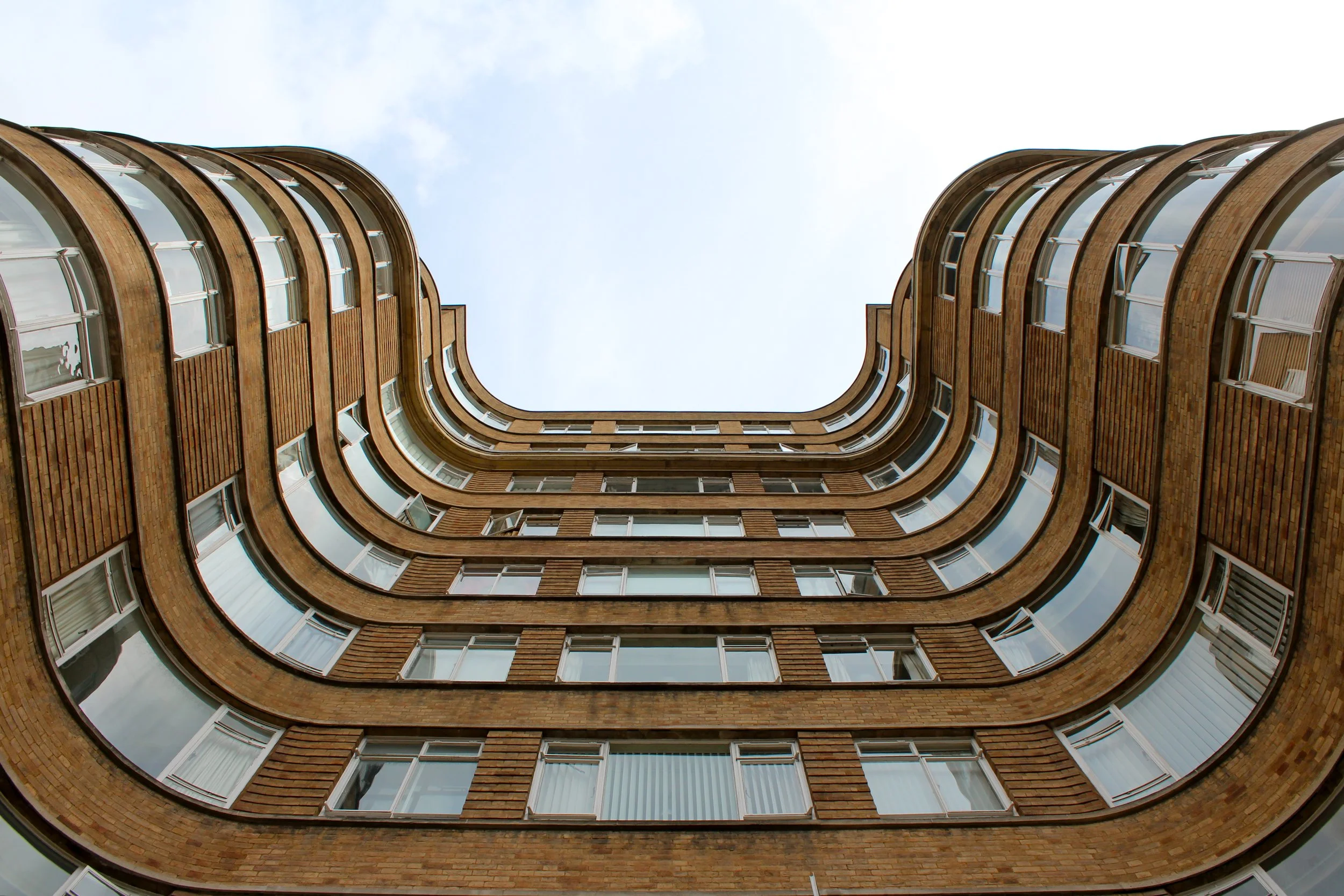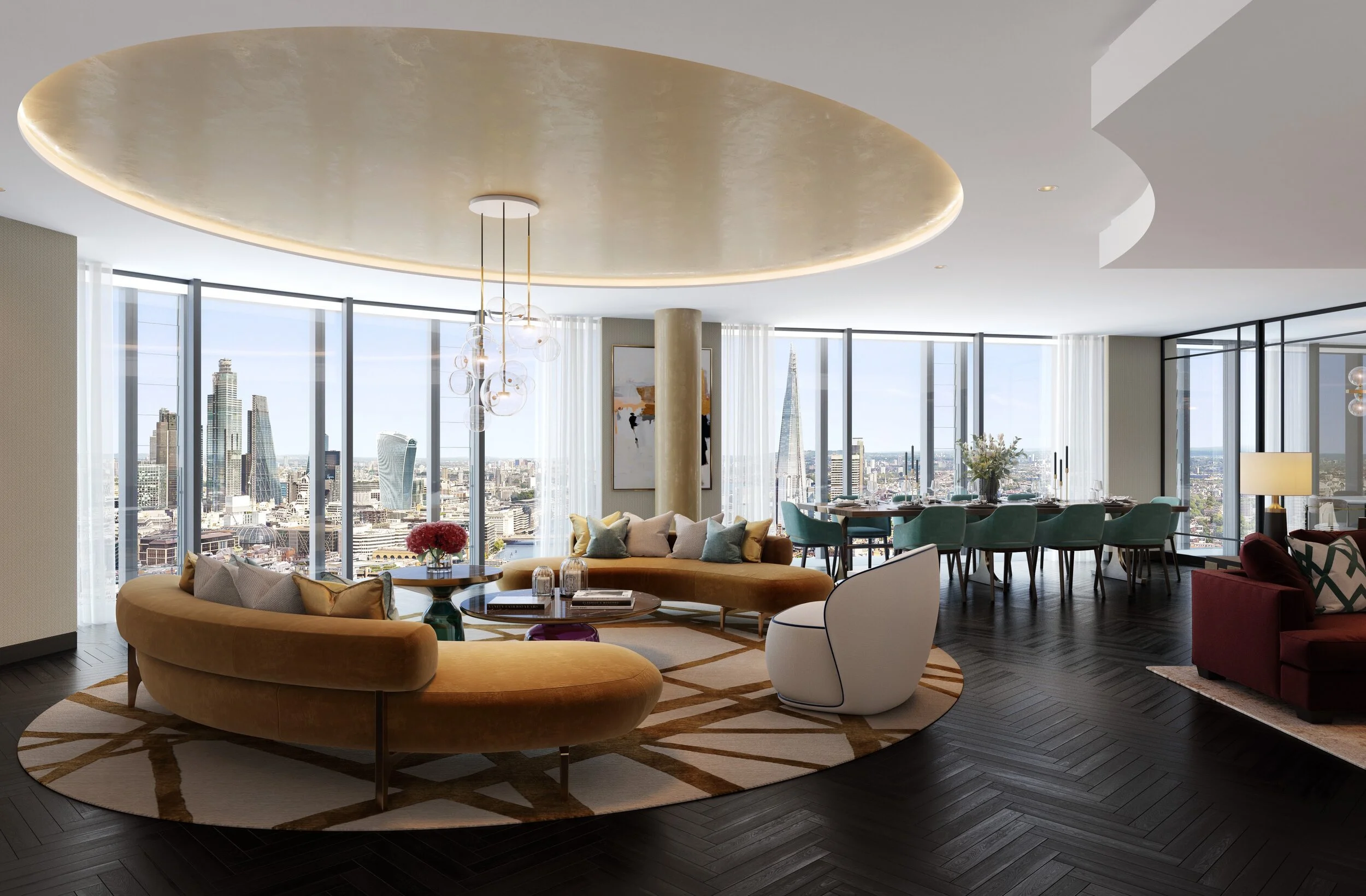100 years of art deco
Image Source: Live Home 3D
Over one hundred years ago, a brand new design idea was introduced to the world and was described as glamorous, geometric and also modern. That’s right, we’re referring to Art Deco. This particular design style burst onto the scene in the 1920s and left a lasting mark on everything from architecture to furniture, jewellery to typography. It defined an era of optimism and innovation. And remarkably, a century later, it still inspires the way we design, decorate and dream of how we want our living spaces to look.
At SP3 London, we see echoes of Art Deco everywhere. We see it in elegant London apartment blocks, in lovingly restored interiors and in the bold, linear themes reappearing in contemporary design schemes and in our luxury interior design projects. So what is it about this movement that continues to hold such sway?
The Rise of Art Deco
Art Deco gets its name from a 1925 design exhibition in Paris. It came after Art Nouveau, but took a very different path. Where Art Nouveau loved curves and nature, Art Deco loved straight lines and bold patterns. It celebrated the machine age. Zigzags, chevrons, sunbursts and steps became its signature shapes. It made modern design look stylish and confident.
In post-war Britain, Art Deco offered a new kind of luxury. One built on optimism, progress and streamlined design. It influenced everything from buildings such as cinemas, to ocean liners to town halls and suburban homes. Materials like chrome, lacquer, mirror and glass were used alongside exotic woods, bold colours and rich textures to deliver what we call today Art Deco.
London’s Art Deco Legacy
Art Deco is a design that crosses borders so you can find it in several countries and cities, like Miami, New York, Australia and more. Interestingly, London has its own quiet wealth of Deco gems too. Here’s a look into some of the best known Art Deco buildings across London:
Image Source: Salterton Arts Review
Eltham Palace
Location: Eltham
A medieval palace turned into a 1930s Art Deco masterpiece. When you step inside Eltham Palace you are instantly met with Art Deco features, in curved walls, intricate marquetry and a gold mosaic clad bathroom that could easily feature within modern boutique hotels across London.
This property is more than just a fantastic visual representation of Art Deco. The design within this property brings order, style and a certain rhythm to the space. Every detail feels well thought out and considered from the geometry of the lighting to the symmetry of the furnishings. It’s a space that feels balanced, but also bold. The result is something quite rare, a historic property that feels simultaneously timeless and modern. That’s the brilliance of Art Deco, it doesn’t just decorate a space, it shapes how the space feels and flows.
Image Source: The London Phile
Florin Court
Location: Clerkenwell
Looking specifically at residential properties in London, there’s a stunning aspect of Art Deco being displayed in Clerkenwell at a building called Florin Court. Built in the 1930s with curved facades and Crittall style windows it’s now considered a Grade II listed building.
What makes this building so compelling to interior designers, architects and buyers is the way it pairs bold geometry with refined details. Florin Court’s Art Deco design displays clean lines and rhythmic repetition which delivers a sense of calmness in the space. Rounded forms and steel windows add character and elegance. For this building, Art Deco delivers structure to the space, but not at the cost of warmth. It blends precision and personality which continues to draw in designers still today. Qualities we champion through our residential design management services.
Other notable examples include the striking Carreras Cigarette Factory (now Greater London House) in Camden, with its dramatic Egyptian Revival flourishes and The Hoover Building in Perivale, a perfect piece of streamlined moderne complete with geometric tiling and pastel detailing.
What Makes Art Deco So Timeless?
If you take it all the way back to the beginning of when Art Deco arrived, it was about balance, between ornament and function, between grandeur and minimalism. It’s a design that doesn’t overwhelm the senses visually but actually enhances it. It invites glamour without a tremendous amount of fuss. Think fluted glass, stepped architraves, lacquered furniture and bold metallics, but all with clean, repeating forms.
When you examine Art Deco and really take a close look you can start to understand it’s visual language. Its language is distinctive. The smallest piece of part of Deco being added to a space can change the feel of a space. A sunburst mirror, a bold light fitting or a geometric wallpaper can bring a sense of theatre and structure into the room. Art Deco is different to other historical styles. Whilst traditional styles focus on heaviness or excess, Art Deco feels and looks sleek and fresh.
Art Deco Influences in Today’s London Homes
We’re seeing a resurgence of Deco-inspired elements in homes across London, especially in spaces where a sense of drama or elegance is desired. In newer apartments, for example, curved walls or rounded corner details nod to Deco proportions. We’ve also noticed a return to patterned, bold tiles with stepped motifs, panelled cabinetry with brass inlays and even built-in bars with ribbed glass and metallic trim.
In refurbishments, designers like SP3 London are taking cues from London’s Deco flats and mansions blocks. Decorative plasterwork, parquet flooring and black-and-white tilework are being reintroduced with restraint. The aim isn’t to mimic the 1930s, but to reimagine it, to give it room to breathe within a modern context.
At SP3 London, we expertly blend historical and modern elements through our FF&E design and FF&E procurement services, enabling homeowners to introduce timeless Art Deco features effortlessly.
Bringing Art Deco into Your Own Home
From the projects we’ve worked on at SP3 London, we know you don’t need to live in an era property to bring a little of its elegance into your home. That’s very much the same for Art Deco.
When it comes to incorporating Art Deco, it starts with shape and material, opting for soft geometric lines, stepped profiles and rich finishes. Furniture with curved backs, consoles with chrome legs or cabinetry with fan-shaped pulls can evoke the period beautifully.
Lighting, in particular, is a simple way to bring Deco influence into a room. Globe pendants, tiered chandeliers and sconces with etched glass or brass arms add a glamorous note without overpowering the space.
And then there’s colour. Art Deco isn’t shy as a design, think deep blues, emerald greens, warm neutrals and metallic highlights. These tones work well across all types of homes, from Victorian conversions to contemporary apartments.
Why It Still Matters Today
In a world full of fast trends and fleeting aesthetics, Art Deco offers something solid. It speaks of craftsmanship, of intentional design, of beauty that lasts. It’s not about nostalgia, it’s about timeless principles applied with flair to modern design.
At SP3 London, we often talk about homes that feel layered, personal and grounded in design history. Art Deco fits effortlessly into that vision. Whether it’s a subtle material reference or a full-throttle Deco interior, it adds richness and clarity to a space.
Final Thoughts from SP3 London
One hundred years on and Art Deco is a design feature that simply hasn’t faded away being left in the past. In fact, it’s quietly making more and more of a comeback into individuals design features for their spaces. Especially across the London landscape that has adopted all types of design features, Art Deco is being weaved into more spaces taking the design from the past and modernising it in today’s design.
So whether you’re restoring a Deco flat in Bloomsbury or simply adding a nod to the era in your hallway mirror or kitchen lighting, Art Deco gives you permission to be expressive. To be refined. To be just a little bit glamorous.
And sometimes, that’s exactly what a home needs.








